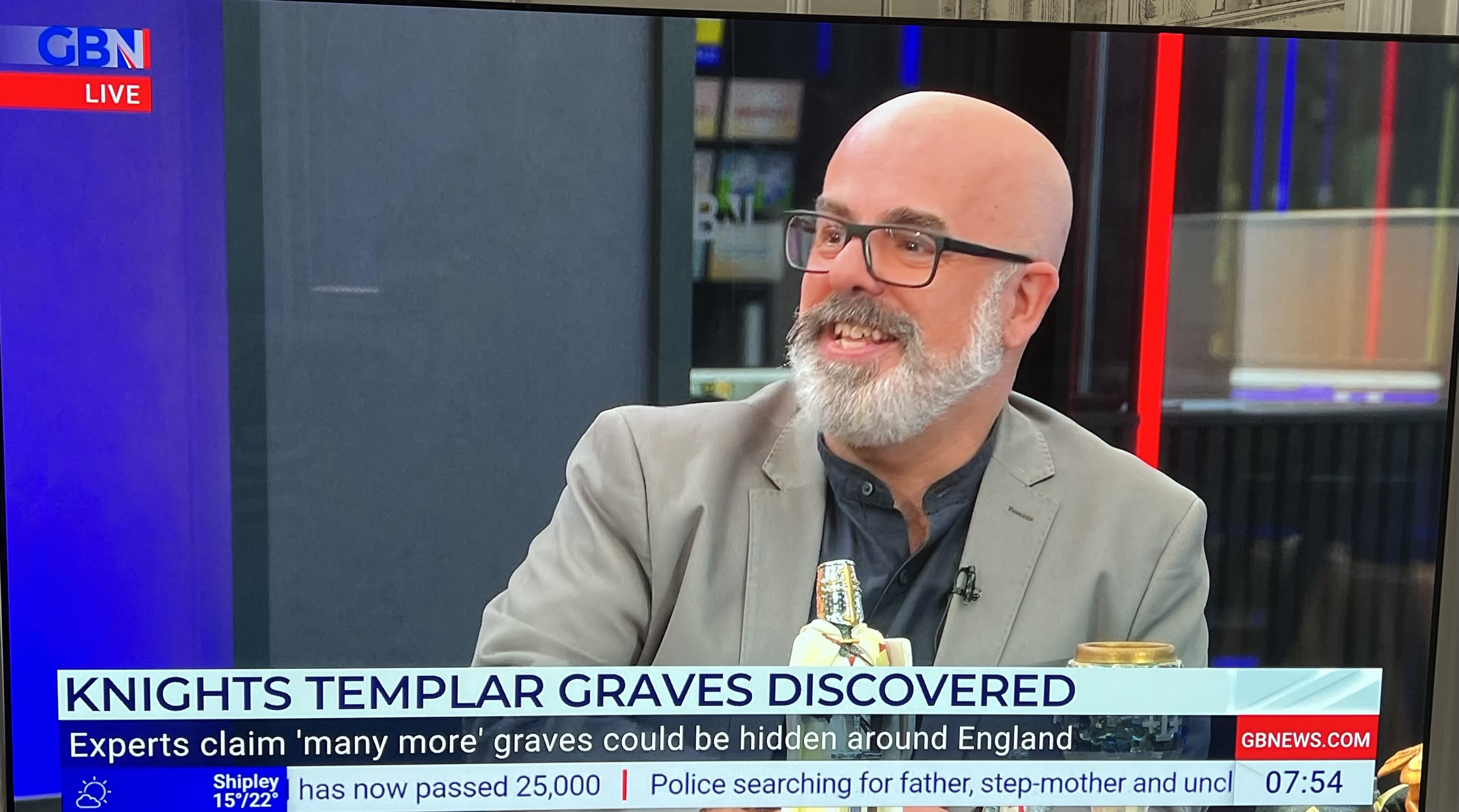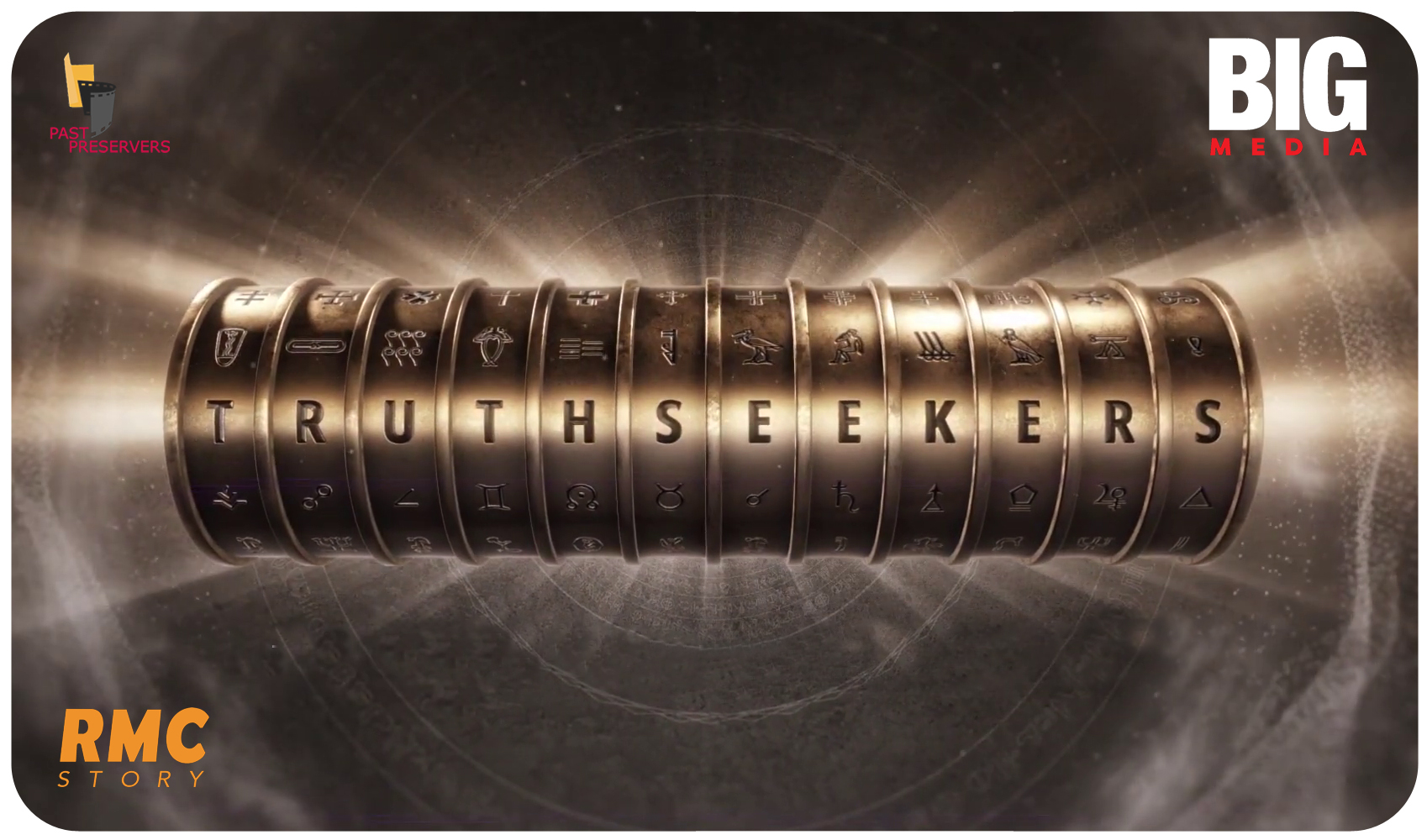The world-famous Turin Shroud is said to be the burial cloth of Jesus Christ bearing an imprint of his face and entire body. But a new theory suggests the face is that of the Fisher King – a legendary figure in the story of King Arthur and the Knights of the Round Table.
British anthropologist David Adkins argues that the cloth wasn’t a funeral shroud for the Messiah two thousand years ago, but a tablecloth used by monks in the Middle Ages. So why does it bear this strange ghostly image that many have believed to be the dead Jesus?
Templar treasure, the Holy Grail, and the Fisher King
It all involves fleeing Templars, English sculptors, and monks keen to promote Burton Abbey – a place of worship in the English Midlands.
Adkins has previously claimed that the Knights Templar brought their treasure – including the Holy Grail and the Ark of the Covenant – to England. The sacred horde, he contends, would have been held for a period in the town of Burton, which had a very wealthy abbey.
You won’t find it now as during the Protestant Reformation under King Henry VIII it was shut down amidst accusations of ‘idolatry’ and corruption. The worship of a statue of Saint Modwen was especially offensive to the new idol-and-relic-hating Protestant faith. The monks were kicked out and much of the monastic complex demolished or stripped for building materials over the years.
But two hundred years before the Reformation – in the 13th and 14th centuries – venerating statues was all well and good. Nobody thought it was a pagan practice. And to celebrate the arrival of the Holy Grail, Adkins thinks local craftsmen carved a life-sized statue of the Fisher King to put in the abbey. A mythical character who was the guardian of the Holy Grail in the Arthurian tales.
The material they used for this statue would have been alabaster sourced locally as there were deposits of alabaster and gypsum in the nearby mines. Traces of both these substances have been found on the Turin Shroud, Adkins notes.
FIND OUT MORE: Claims the Holy Grail and Ark of the Covenant are in England
How the Fisher King ended up on the Turin Shroud
Adkins explains how the Fisher King’s face ended up imprinted on the cloth. Up until 1350, the statue of the Fisher King was proudly on display. A reminder to the faithful that the Knights Templar had brought the Holy Grail there. But then the abbey was rebuilt, and its statues and effigies put into storage.
“They would have been wrapped in cloth and linen to protect them and, no doubt, stored in the abbey’s vaults and cellars. “It is highly likely the statue was left slumbering in the vaults of the abbey for over a decade – or at least until the new abbey church had been completed.
“Then it was retrieved and placed back on display. However, when the monks came to unwrap it, they noticed that the alabaster had reacted with chemicals in the mustiness of the cellar and left an image of the Fisher King on the old linen cloth. This is where the story of the Turin Shroud begins.
Confronted with a cloth bearing the likeness of a bearded male figure, the monks decided to concoct a story that this cloth had been part of the Templar treasure brought from Jerusalem. Churches and abbeys were always competing in the Middle Ages for who had the best and most holy relics.
Adkins claims the monks then destroyed the statue of the Fisher King to hide the true origin of the image. To bolster the credibility of the shroud being the burial cloth of the crucified Messiah, the monks added blood. Their own blood. Or that of patients who came to have bloodletting as the monastery acted as a kind of local medical centre.
So, to summarise Adkins’ theory:
- Gypsum on the shroud confirms it was used to wrap up a statue of the Fisher King in a part of England where there’s plenty of gypsum and alabaster
- There’s evidence of organic material on the shroud including the DNA of a marine sea worm. Adkins explains this stating that the shroud was previously used as a tablecloth at the abbey and the organic material is food remnants from the monks’ many meals. They then hastily used this tablecloth to wrap the statue of the Fisher King and then after a few years it became stained with the statue’s haunting image
- Radiocarbon dating places the shroud at somewhere between 1260 and 1390 which allows for the Templars bringing the Grail back to England, the statue of the Fisher King being made and then wrapped in the tablecloth
- The Turin Shroud is first recorded officially between 1353 and 1357 and that ties in with the rebuilding of Burton Abbey around 1350 and the monks selling the now sacred tablecloth to a buyer in Florence, Italy
- The criticism of the Turin Shroud that it is not anatomically correct can be explained by this theory because it was never used to cover a real man but a statue. Even the positioning of the right hand is said to be covering his groin – famously injured in the Arthurian story rendering the Fisher King impotent
Previous Templar related claims by David Adkins
Adkins is well known for his claims regarding the Holy Grail and Ark of the Covenant being brought to England – specifically, Burton-on-Trent. I previously posted about his assertion that these holy objects are buried in a labyrinth of tunnels underneath Sinai Park House – a mansion near Burton.
I’ve also written about other theories such as the bizarre claim from another source that the Turin Shroud bears the face of Jacques de Molay, the last Grand Master of the Knights Templar.












Mr McMahon,
The theory by Mr. Adkins on the Shroud of Turin ignores the evidence that has been produced by serious research scientists over the last forty-five years. Is Mr. Adkins playing with fanciful theories to entertain? Are we dealing with facts that are produced by qualified researchers? As you know, science can never prove that the Shroud of Turin is the burial cloth of Jesus. That is not its job. It can however determine and state the scientific and historical evidence it contains. The job of scientists is to follow the scientific method: produce a correct model for investigation and procedural methodology, be open and honest about their methodology and data collection, accurately and without bias thoroughly investigate, triple check their data for error and then, and only then, see in what direction their research points and what conclusion can be made. Scientists should have no agendas. Historians and anthropologists should have no agendas. The three Oxford researchers that produced spurious Carbon-14 results in 1988 were ultimately proven to be in error. It took thirty years of trying to get their methodology and investigative procedures from Oxford and the British Museum before the Museum finally gave its information to outside researchers, and researchers only got it then because of potential legal action against the Museum. Allow me to just provide a few facts about the Shroud by one of the research scientists who has devoted a great deal of time to investigating it. He is a nuclear engineer by the name of Robert A. Rucker. His most recent paper was written in July 2020. He provides a thorough presentation and analysis of the evidence. One of the research theories, based on data, points in the direction that the Shroud’s image was formed as a result of radiation impacting the cloth in very short bursts, thus creating an image but not destroying the cloth. His papers are copyrighted and present over thirty articles, research papers, and books that can be trusted and worthy of being taken seriously. Articles continue to be written in the popular press which present “facts” or “new information” which supposedly “proves” the Shroud is a fake. However, for these individuals or journalists to present this supposed “information” without taking into consideration the available research from the last 45 years is irresponsible. Below are nineteen facts from Ruckers’ paper entitled “Status of Research on the Shroud of Turin.” Its PDF is available on the internet. If you look up his paper these 19 points can be better appreciated if you see the photograph of the Shroud which accompanies his data at the bottom of his paper. His data:
1. There is “Rigor mortis in the feet. This indicates the victim was dead.
2. Two nails through one foot, one of them through both feet.
3. Fire in 1532 resulted in scorch marks and water stains (on the Shroud).
4. Areas badly damaged in the fire were patched in 1534.
5. The Hungarian Pray manuscript (1192-1195) has a painting of a famous burial cloth that had long been in Constantinople. It shows the same L-shaped burn holes that are on the Shroud, so the Shroud must have existed significantly (more than 2 sigma) before the C14 date of 1260 to 1390 AD. Thus, this C14 date must be flawed.
6. The Shroud appears to show a flow of blood and clear blood serum from a wound in the side. Blood serum is mostly composed of water. Compare this with “blood and water” in John 19:34.
7. The Shroud shows 100 to 120 scourge marks from Roman flagrum. Resulting blood marks show blood serum rings (visible only under UV) around the blood particles. Compare with Mk. 15:15.
8. Abrasions on both shoulders from carrying a rough heavy object.
9. Puncture wounds from sharp objects pierced his scalp.
10. Pollen on the Shroud unique to the area around Jerusalem. Pollen
from a plant with long thorns found around his head.
11. The images are negative images and contain 3D information that
indicates the distance of the cloth from the body. Only the top 1 or 2 layers of fibers in a thread are discolored. The discolored fibers in the image result from the carbon atoms that were already in the cellulose molecules in the flax fibers being changed from single to double electron bonds, yet this produced the image of a naked crucified man.
12. Swollen cheeks and damaged nose from a beating or a fall.
13. Side wound shows a hole the size of a Roman thrusting spear.
14. Blood running down arms at the correct angles for crucifixion. Blood
is real human blood, male, type AB. The blood with high bilirubin content and nanoparticles of creatinine bound to ferritin indicate he was severely tortured. Blood from the side wound is post-mortem.
15. Paintings from the Middle Ages show nails through the palms, but this will not support enough weight since there is no bone structure above this location. The Shroud shows the correct nail locations – through the wrist instead of the palm.
16. Shroud correctly shows thumbs folded under due to contact of the nail with the main nerve that goes through the wrist. This is also contrary to paintings from the Middle Ages.
17. Abrasions on one knee show a microscopic amount of dirt.
18. Three-inch wide side strip sown on with a unique stitch very similar
to that found at Masada, which was destroyed in 73-74 AD.
19. Microscopic chips near the feet of travertine aragonite limestone containing impurities that closely match limestone in Jerusalem.” Copyright © 2019, Robert A. Rucker. All rights reserved. Ruckers’ papers on the Shroud can be downloaded from his website at http://www.shroudresearch.net/research.html. Send comments, questions, or corrections to robertarucker@yahoo.com.